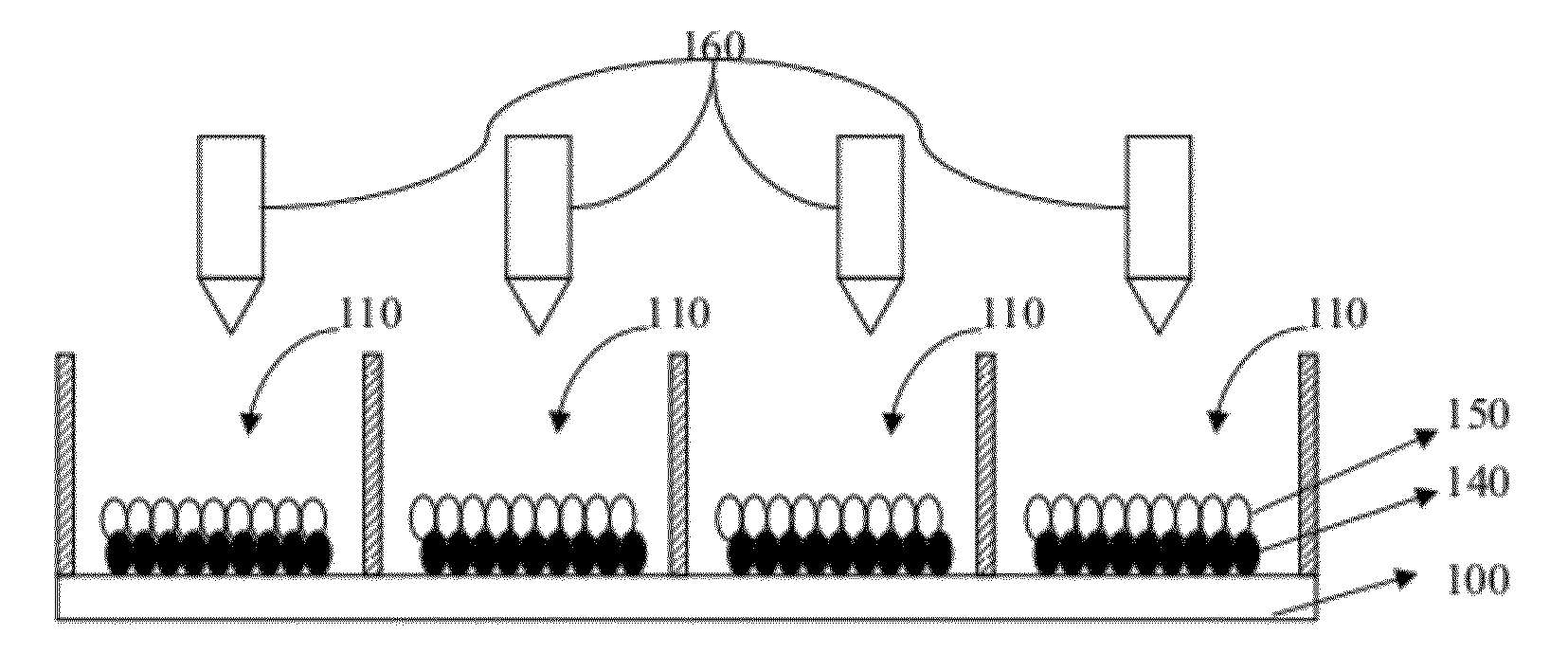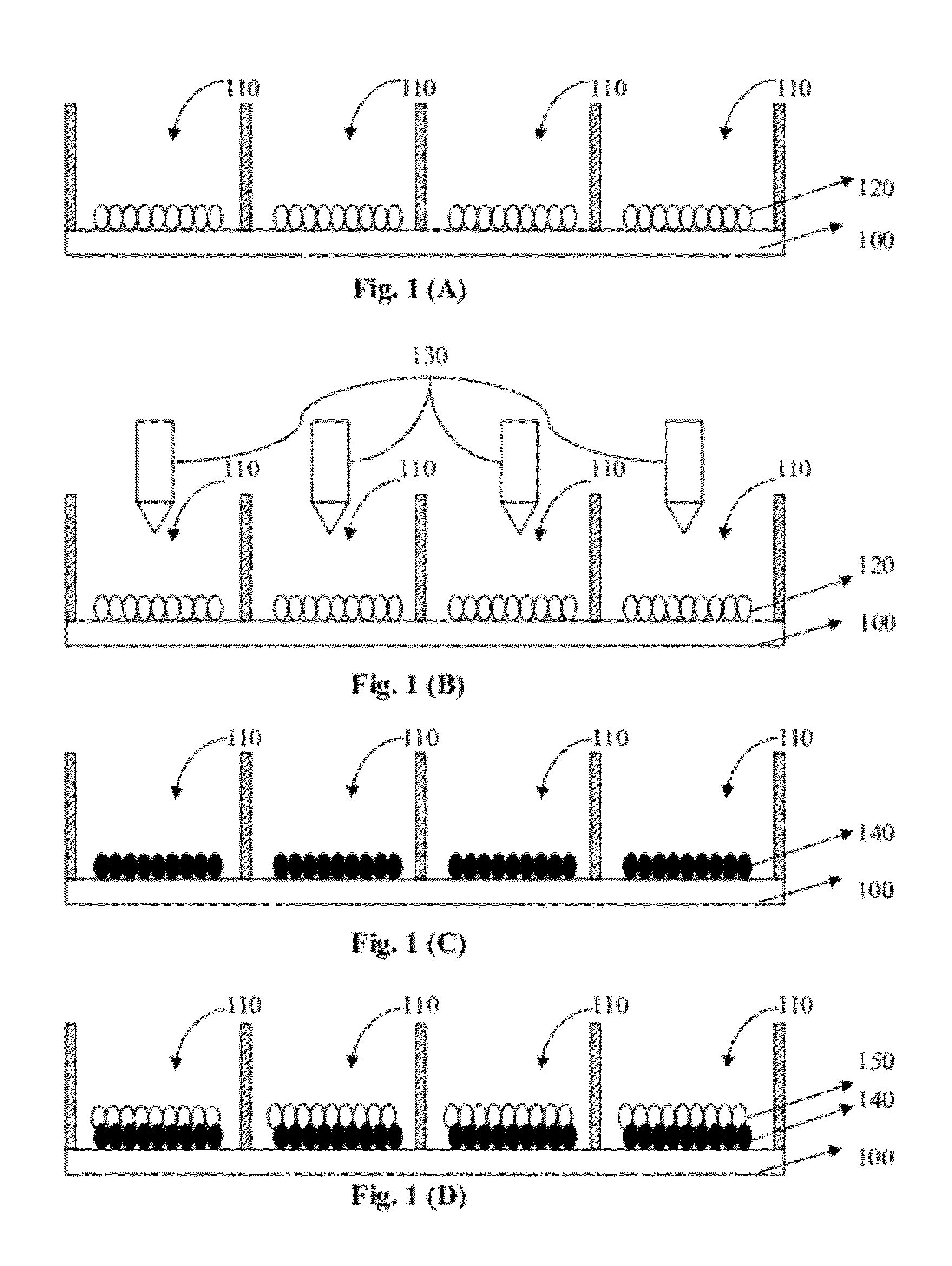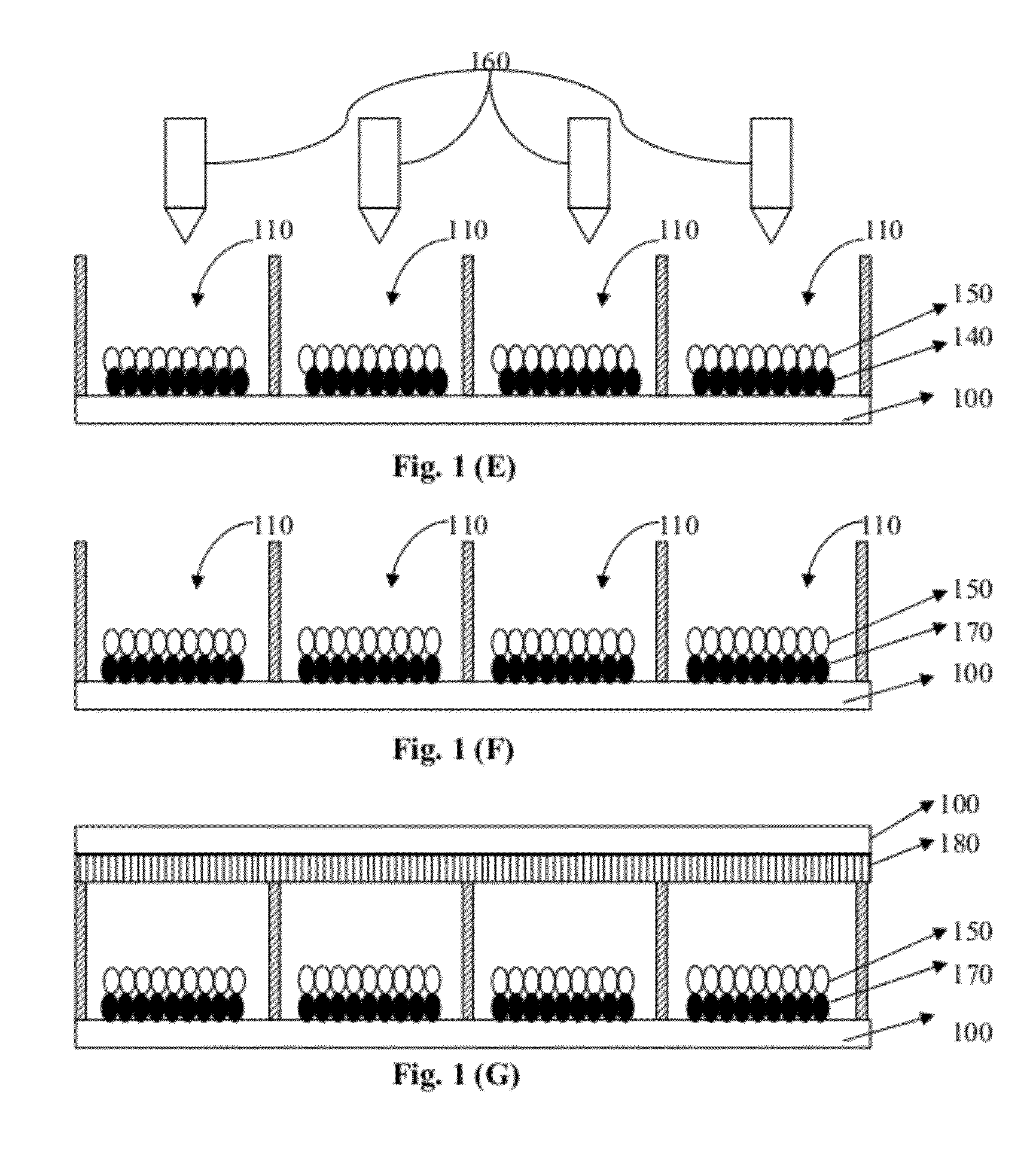Switchable color particle-based display and method of manufacturing same
a technology of color particle and display, which is applied in the field of display, can solve the problems of high inability to reduce the manufacturing cost of color microcapsule electrophoretic display, and inability to achieve the design of microcapsule electrophoretic display, etc., and achieves the effect of reducing costs, simplifying the formation process of color pigment particles, and special reaction selectivity
- Summary
- Abstract
- Description
- Claims
- Application Information
AI Technical Summary
Benefits of technology
Problems solved by technology
Method used
Image
Examples
example 1
[0138]Desired amounts of polyvinyl pyrrolidone (Sigma-Aldrich), 2-2′-azobis (2-methyl-butyronitrile) (TCI), vinyl aniline (Alfa-Aesar), divinylbenzene (Aldrich) and styrene (Acros) are added into an amount of ethanol and completely dissolved therein to form a first liquid mixture, which is then disposed in a high temperature environment for polymerization for a period of time. Then, separating and drying processes are performed to obtain first-type particles with a particle size (D50) about 3.0 μm.
[0139]In addition, desired amounts of polyvinyl pyrrolidone (Sigma-Aldrich), 2-2′-azobis (2-methyl-butyronitrile) (TCI), 1H,1H,2H,2H-heptadecafluorodecyl methacrylate (Matrix), divinylbenzene (Aldrich) and styrene (Acros) are added into an amount of ethanol and completely dissolved therein to form a second liquid mixture, which is then disposed in a high temperature environment for polymerization for a period of time. Separating and drying processes are then performed to obtain particles. ...
example 2
[0141]Desired amounts of polyvinyl pyrrolidone (Sigma-Aldrich), 2-2′-azobis (2-methyl-butyronitrile) (TCI), vinyl aniline (Alfa-Aesar), divinylbenzene (Aldrich) and styrene (Acros) are added into an amount of ethanol and completely dissolved therein to form a first liquid mixture, which is then disposed in a high temperature environment for polymerization for a period of time. Then, separating and drying processes are performed to obtain first-type particles with a particle size (D50) about 3.0 μm.
[0142]In addition, desired amounts of polyvinyl pyrrolidone (Sigma-Aldrich), styrene (Acros), vinyl pyridine (Aldrich) and azobisisobutyronitrile (Showa) are added into an amount of ethanol and completely dissolved therein to form a second liquid mixture, which is then disposed in a high temperature environment for polymerization for a period of time. Then, separating and drying processes are performed to obtain polystyrene-vinyl pyridine particles. Further, the obtained particles, acrylic...
example 3
[0144]Polyvinyl pyrrolidone (Sigma-Aldrich), 2-2′-azobis (2-methyl-butyronitrile) (TCI), vinyl aniline (Alfa-Aesar), divinylbenzene (Aldrich) and styrene (Acros) are added into an amount of ethanol and completely dissolved therein to form a first liquid mixture, which is then disposed in a high temperature environment for polymerization for a period of time. Then, separating and drying processes are performed to obtain first-type particles with a particle size (D50) about 3.0 μm.
[0145]In addition, polyvinyl pyrrolidone (Sigma-Aldrich), 2-2′-azobis(2-methyl-butyronitrile) (TCI), 1H,1H,2H,2H-heptadecafluorodecyl methacrylate (Matrix), divinylbenzene (Aldrich) and styrene (Acros) are added into an amount of ethanol and completely dissolved therein to form a second liquid mixture, which is then disposed in a high temperature environment for polymerization for a period of time. Then, separating and drying processes are performed to obtain particles. The obtained particles are then coated...
PUM
| Property | Measurement | Unit |
|---|---|---|
| surface energy | aaaaa | aaaaa |
| surface energy | aaaaa | aaaaa |
| diameter | aaaaa | aaaaa |
Abstract
Description
Claims
Application Information
 Login to View More
Login to View More - R&D
- Intellectual Property
- Life Sciences
- Materials
- Tech Scout
- Unparalleled Data Quality
- Higher Quality Content
- 60% Fewer Hallucinations
Browse by: Latest US Patents, China's latest patents, Technical Efficacy Thesaurus, Application Domain, Technology Topic, Popular Technical Reports.
© 2025 PatSnap. All rights reserved.Legal|Privacy policy|Modern Slavery Act Transparency Statement|Sitemap|About US| Contact US: help@patsnap.com



